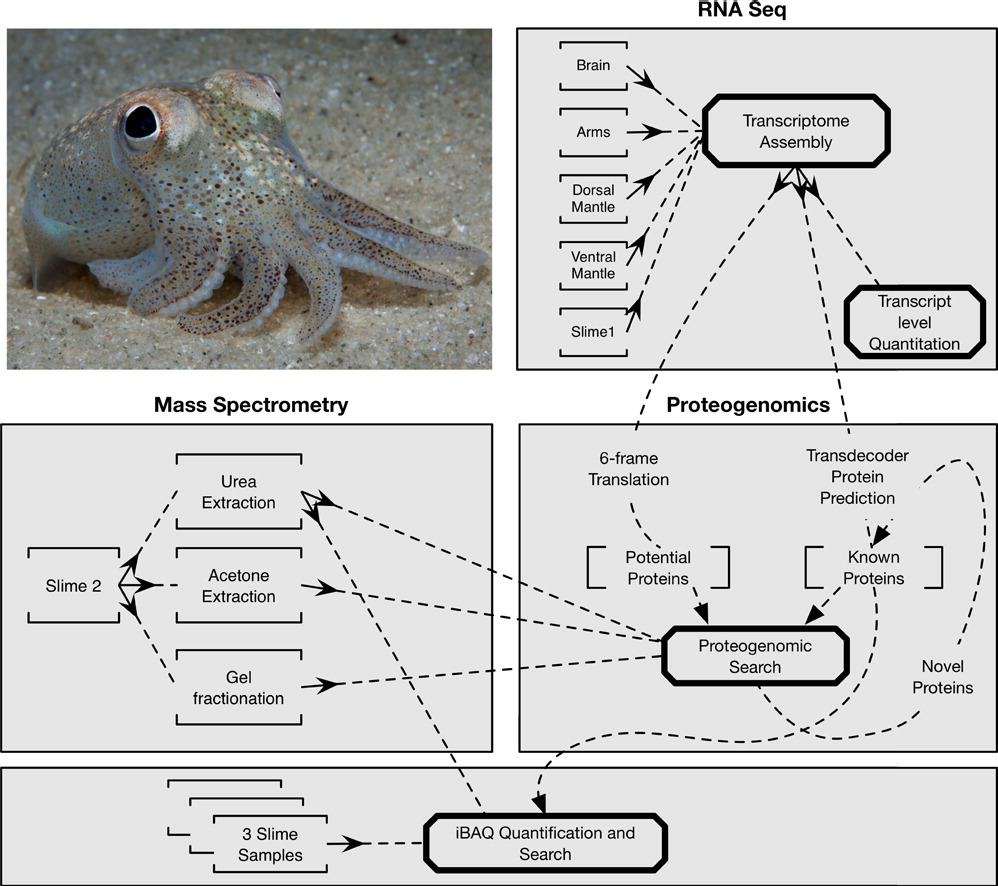A combined proteomic and transcriptomic analysis of slime secreted by the southern bottletail squid, Sepiadarium austrinum (Cephalopoda)

Sepiadarium austrinum, the southern bottletail squid, is a small squid that inhabits soft sediments along Australia’s south-east coast. When provoked, it rapidly secretes large volumes of slime, presumably as a form of chemical defense. We analyzed the proteomic composition of this slime using tandem mass spectrometry and transcriptomics and found that it was remarkably complex with 1735 identified protein groups (FDR:0.01). To investigate the chemical defense hypothesis we performed an Artemia toxicity assay and used sequence analysis to search for toxin-like molecules. Although the slime did not appear to be toxic to Artemia we found 13 proteins in slime with the hallmarks of toxins, namely cysteine richness, short length, a signal peptide and/or homology to known toxins. These included three short (80-130AA) cysteine rich secreted proteins with no homology to proteins on the NCBI or UniProt databases. Other protein families found included, CAP, phospholipase-B, ShKT-like peptides, peptidase S10, Kunitz BPTI and DNase II. Quantitative analysis using intensity based absolute quantification (iBAQ via MaxQuant) revealed 20 highly abundant proteins, accounting for 67% of iBAQ signal, and three of these were toxin-like. No mucin homologues were found suggesting that the structure of the slime gel may be formed by an unknown mechanism.